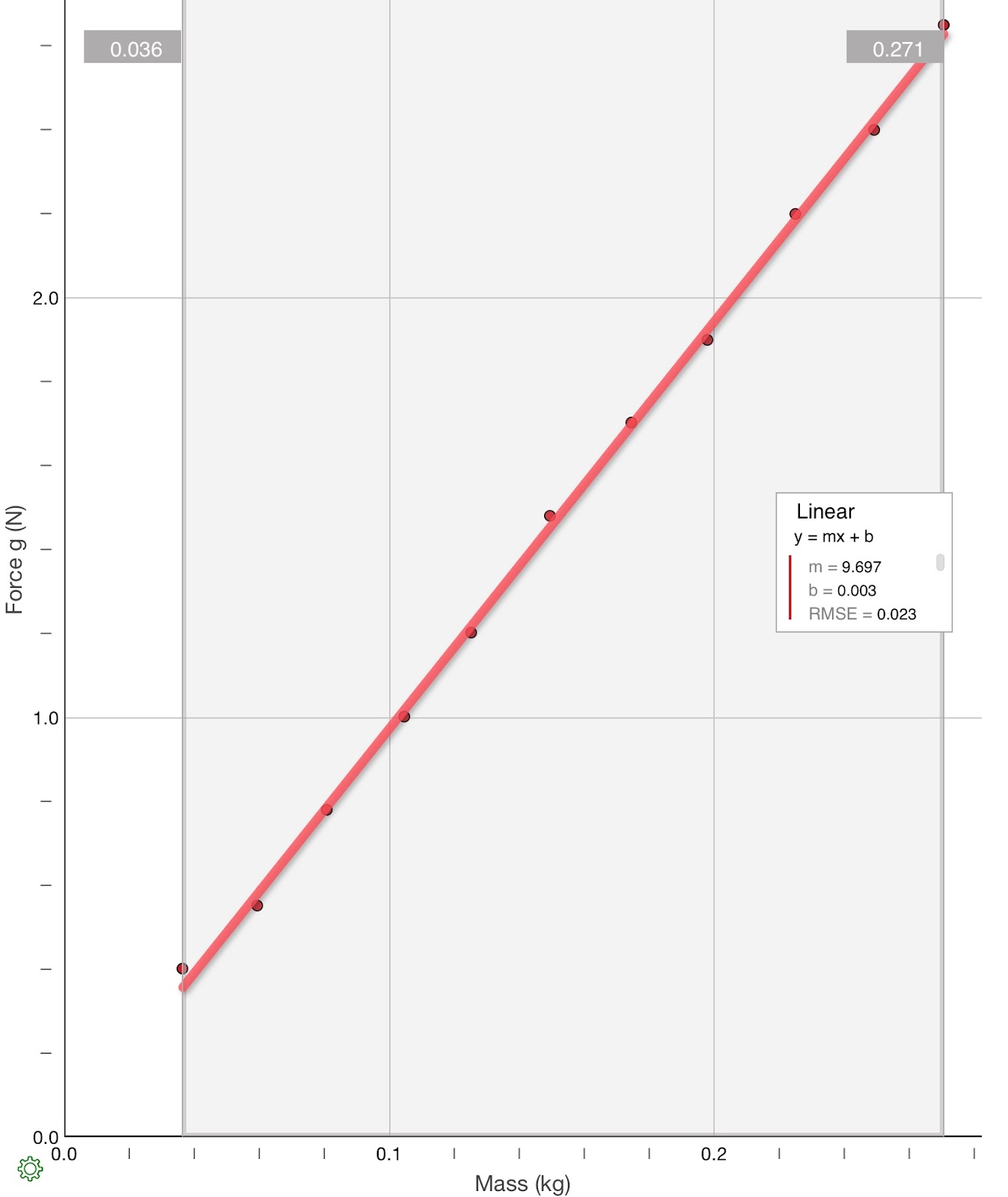Balanced Forces Particle Model Lab
Tyler Kolby, Gabrielle Murphy, Ryan Partain, Trey Seabrooke
Objective
To determine the mathematical and graphical relationship between the mass of an object and the force of gravity acting upon it.
Picture of Apparatus
Procedure
- Obtain a balance, a spring scale, a stand, and 22 washers.
- Set up the stand. Attach the spring scale onto the stand.
- Measure the mass of two washers on a balance and record in the data table.
- Place the washers on the metal piece suspended from the hook on the spring scale.
- Record the force of gravity measured for the washers in the data table.
- Repeat steps 3-5 ten times, adding two more washers to the previous number of washers and recording the measurements in the data table.
Data
Force of Gravity vs Mass Graph
Analysis and Conclusion
The force of gravity vs mass graph shows that as the masses of the washers increase, the force of gravity also increases. This is a direct, linear relationship between the force of gravity and the masses of the objects. Because of this linear relationship, the general equation y=mx+b can be used. In this experiment, y can be replaced by the force of gravity, FG. Additionally, x can be replaced by the mass, m. The y-intercept, b, would be zero - if there were no mass on the spring scale, the force of gravity acting on that mass is zero. The slope, m, can be calculated from the graph, resulting in: m=9.7N/kg. The mathematical relationship to describe this graph can then be explained through the following equation: FG=(9.7N/kg)m.
The slope of the graph, 9.7N/kg, can be related to Earth’s gravitational force on all objects - for every mass on earth, the gravitational force is the mass multiplied by the constant, 9.7N/kg. Due to errors in the experiment, this slope is slightly off, and the value should be closer to 10N/kg. The slope of the graph represents the strength of the Earth's gravitational force field - the gravitational force for each mass at that point in space. A more generalized equation that can be used to represent this would be FG=gm, where "g" is used to represent the slope and therefore the strength of Earth's gravitational force field - 10N/kg.
Some errors were present during this experiment. Each washer was a different mass; because of this, the addition of washers would not have been in equal increments. The result would be a variation in the data as the masses of the washers increased. Another source of error is that the balance used may not have been the most accurate, so the measurement of the masses could have been a little off. We also might not have had the most accurate scale to hold the washers. We could improve this if we used more accurate materials to measure and washers with more similar masses.